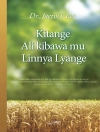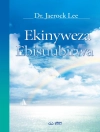Presents Tantra from an ethnographic vantage point, through a series of case studies grounded in diverse settings across contemporary Asia.
This is the first collection of essays to approach the topic of Tantric Studies from the vantage point of ethnography and lived religion, moving beyond the centrality of written texts and giving voice to the everyday life and livelihoods of a multitude of Tantric actors. Bringing together a team of international scholars whose contributions range across diverse communities and traditions in South Asia, Southeast Asia, and the Himalayan region, the book connects distant shores of Tantric scholarship and lived Tantric practices. The contributors unpack Tantra’s relationship to the body, ritual performance, sexuality, secrecy, power hierarchies, death, magic, and healing, while doing so with vigilant sensitivity to decolonization and the ethics of fieldwork. Through diverse ethnographies of Tantra and attention to lived experiences and life stories, the book challenges normative definitions of Tantra and maps the variety of Tantric traditions, providing comparative perspectives on Tantric societies across regions and religious backgrounds. The accessible tone of the ethnographic case studies makes this an ideal book for undergraduate or graduate audiences working on the topic of Tantra.
विषयसूची
List of Illustrations
Acknowledgments
Introduction: Rethinking Tantra through Ethnography
Carola E. Lorea and Rohit Singh
Part I: On Materiality and Mediation: Lived Practices of Texts, Objects, and Media
1. An Ethnography of Tantra in the Western Himalayas: The Material Substance of Practical Rituals
William S. Sax
2. Observing Participation, Transgressing Hermeneutics: Bali’s Tantric Script Practices and the Limits of Participant Observation
Annette Hornbacher
3. The Conch as a Tantric Artifact: Metaphysics of a Number and the Twirled Lives of Text and Practice
Sukanya Sarbadhikary
4. Whats App Bagalāmukhī! Social Life and Experiences of a Tantric Goddess
Sravana Borkataky-Varma
Part II: Embodiment, Identity, and Experience: Conversations with Tantric Livelihoods
5. Folk Tantra and Healing: An Ethnography of Traditional Healers in the Darjeeling Hills and Sikkim
Jarrod Hyam
6. Songs for Siddhi: An Ethnographic Analysis of Bāul Fakiri Sādhanā
Keith Edward Cantú
7. Serving the Divine Element in Humans: Everyday (Tantric) Vaiṣṇavism and What Begging Means to Bāuls
Kristin Hanssen
Part III: Institutions and Individuals in the Making of Tantric Traditions: To Be or Become Tantric
8. The Cremation Ground, the Battlefield, and the Path of Compassion; or, What Makes the Fabric of an Individual’s Tantric Encounter?
Nike-Ann Schröder
9. The Spectrum of Eclecticism and Conservatism within Kerala’s Tantric Traditions: A Case Study of Meppaṭ Sampradāya
Maciej Karasinski
10. Tantric Lives in Bengal and Bali: Toward a Comparative Ethnography
June Mc Daniel
Afterword
Geoffrey Samuel
List of Contributors
Index
लेखक के बारे में
Carola E. Lorea is Assistant Professor of Religious Studies, Faculty of Humanities at the University of Tubingen in Germany. She is the author of Folklore, Religion, and the Songs of a Bengali Madman: A Journey Between Performance and the Politics of Cultural Representation. Rohit Singh is Lecturer and Director of Undergraduate Studies in the Department of Religious Studies at UNC Greensboro.







![का आवरण Brian Schrag & Julisa Rowe: Community Arts for God's Purposes [Chinese] 貼近神心意的社群藝術 का आवरण Brian Schrag & Julisa Rowe: Community Arts for God's Purposes [Chinese] 貼近神心意的社群藝術](https://static.worldofdigitals.com/thumb_webp/740/9781645083740.webp)




